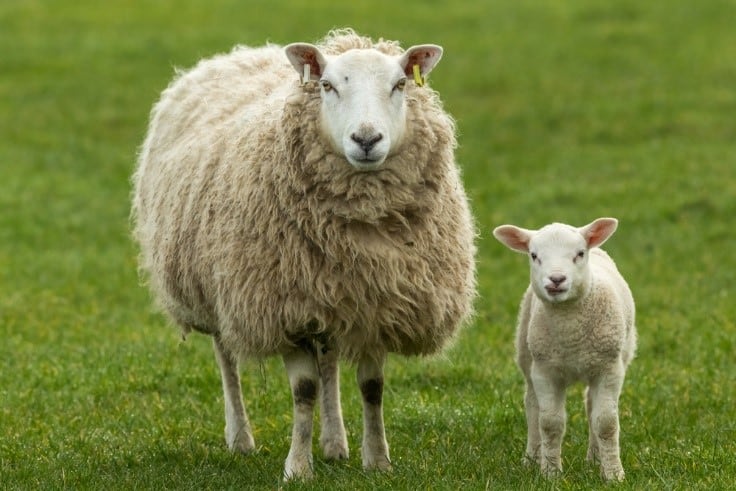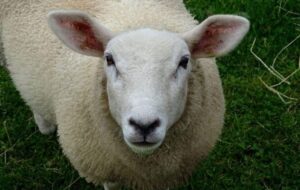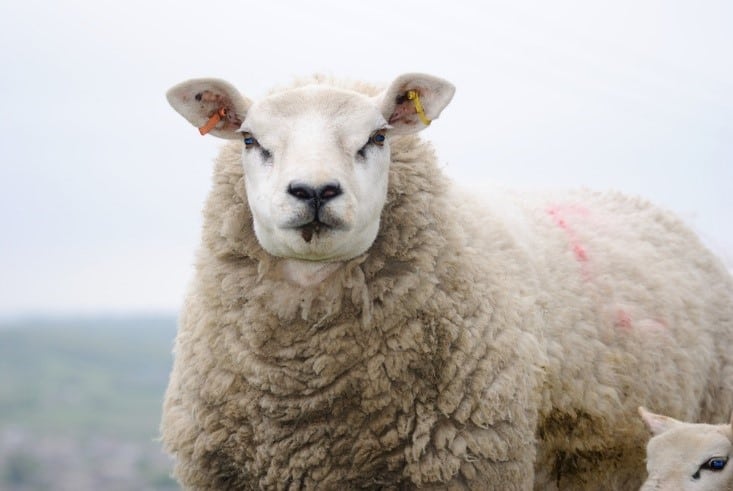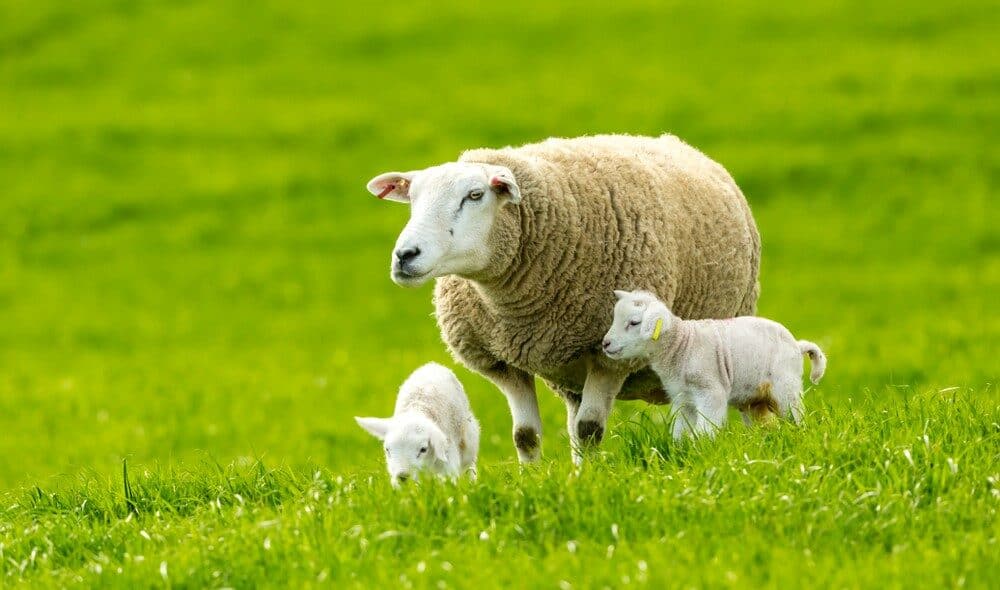Last Updated on October 10, 2024 by Alice Benny
Texels are easy to raise, highly adaptable, muscular, and like all sheep, need to be kept in a small flock. Don’t raise just one; they are social animals and also use each other for protection while on pasture. This is a good sheep breed for meat.
The Texel sheep breed is unlike most other sheep breeds. While some sheep, such as Fat Tail sheep, are bred for their meat but still have a considerable amount of tallow (animal fat) to offer, the Texel breed is specifically bred for meat production.
There are quite several Texel sheep varieties available today. These include:
- Dutch Texel
- British Texel
- French Texel
While these sheep tend to have some minor differences among them—for example, the British Texel is typically taller while the Dutch Texel is a little stocky with short legs—the entire species has outstanding muscle development and meat leanness.
If you are in the market for a reliable sheep breed that can produce a great deal of meat, the Texel sheep might be what you need on your farm. Here are some facts about this sheep breed that you might need to know.
Why Raise Texel Sheep?
According to the Texel Sheep Breeders Society, the Texel breed has become a dominant terminal-sire breed in Europe and the US. This breed is so popular that it’s almost as favored as the Suffolk sheep breed among farmers.
This is mostly because more and more breeders are shifting their focus from wool to meat and lamb production. This has become a common trait in the US and other countries such as New Zealand and Australia.
This makes Texels a valuable sheep breed. That being said, here are some reasons why you should consider raising Texel sheep.
- Meat production: One of the main reasons Texel sheep are so popular with breeders across the globe is their ability to produce high-quality meat. This is often the purpose of raising. They are heavily muscled with a desirable muscle to bone ratio.
- Great lambing and maternal instincts: Texel lambs have an excellent survival rate because the ewes are protective and produce a great deal of good quality milk. They give birth to lambs easily.
- Wool production: Even though the sheep wool produced by this breed isn’t the primary reason they are raised, they still do a good job of producing high-quality wool.
- Growth rate: This sheep breed has a reasonably high growth rate, with the lambs reaching an average weight of 55 lbs by the time they are weaned at 12 weeks.
- Show animals: Many people raise Texel sheep for show and exhibition.
There is no doubt that purebred Texel sheep are an excellent addition to any farm. Not only do they have a great growth rate, but they also offer excellent wool and milk production.
However, the carcass quality and meat production make them profitable livestock for farming and among the best farm animals to raise.

Texel Sheep Appearance and Facts
The Texel sheep is a meat breed. Its most outstanding feature is its remarkable muscle development and lean body. Researchers from the University of Wisconsin and the Clay Center agree that Texel-sired lambs tend to have a 6 – 10% advantage in the loin-eye area over other breed-sired lambs, especially the American black-face breed.
This sheep breed has a distinctively short, wide face topped off by a black nose. Its ears are short and widely placed, while its carriage is almost horizontal.
Even though it isn’t particularly bred for its wool production capabilities, the Texel sheep does produce quite a bit of wool. The wool produced by this sheep is medium grade and has no black fibers.
Texels are highly adaptable, friendly and easy to raise.
Color
The original Texel sheep breed and the breed available today aren’t that different. Today, we have a white-faced breed with no wool on its head and legs. They tend to have black hooves and black noses. Other white-faced breeds are Cheviot sheep and Rambouillets.
Meat Production and Size
Texel-sired lambs have a remarkable growth rate. This is mostly because Texel ewes produce an excellent milk yield after lambing. On average, Texel lambs can gain about 0.55 lbs of weight per day. These lambs are weaned at 12 weeks when they can weigh as much as 56 lbs.
At slaughter, which is often around their 24th week, Texel lambs can weigh about 97 pounds on average. Being medium-sized sheep, mature Texel ewes can weigh about 150 to 200 lbs while Texel rams can weigh 200 to 238 lbs. What’s most remarkable about this breed is the carcass quality that is sought after worldwide.
Learn about raising meat sheep breeds and others to consider such as Icelandic sheep.
Texel Sheep Origin and History
As the name suggests, the Texel sheep come from the Isle of Texel in the Netherlands. This sheep is believed to have come about in the nineteenth century. During this period, local farmers noticed a breed of sheep that could grow big while eating very little. They crossbred this sheep with the Leicester Longwool and the Lincoln breed to come up with the Texel sheep in the 1800s.
This breed of sheep was introduced in the US around 1985 and immediately became very popular with sheep breeders and farmers across the country. Throughout the years, the emphasis has always been on developing a breed that can produce heavily muscled lambs that give superior meat quality while maintaining a low propensity for fat disposition throughout their body.
Upon arriving in the US, the sheep were taken to the Meat Animal Research Center in Nebraska. This breed was then quarantined for about five years before a few started getting sold to private breeders across the country.
Today, it’s become a popular breed in several countries, including Australia, America, New Zealand, and most European nations, such as Northern Ireland.

Reproduction
Those looking to become Texel sheep breeders will be happy to hear that the Texel breed is prolific at breeding. Even though Texel ewes breed only once a year and give birth to a single lamb, or a pair of lambs on rare occasions, what’s outstanding is the survival rate of their young. Since Texel ewes produce quite a bit of good quality milk after lambing, the lambs often have a much better chance of surviving than most other breeds.
Texel ewes come into heat at around 7 months, and the length of the breeding period is about 5 months. This breed of domestic sheep makes excellent mothers who provide ample milk for their lambs. Texel sheep are not hard to lamb.
While you may choose to have the lambs and older sheep slaughtered for meat, their lifespan is 10 – 12 years. Living conditions and other factors affect how long sheep live.

FAQs
Are Dutch Texel sheep hard to lamb?
No, Texel sheep aren’t hard to lamb. Crossbred lambs have been known to be quite vigorous at birth. These lambs have an excellent survival rate thanks to the great maternal instincts exhibited by the ewes.
Can you milk Texel sheep?
Yes, you can milk Texel sheep. One of the main reasons Texel lambs have such a good survival rate is because the ewes produce lots of high-quality milk. You can milk Texel ewes at 4 to 6 weeks after lambing.
What should I look for in a high-quality Texel ram?
The head is the first thing you should look for in a high-quality Texel lamb. It should have a deep jaw line, and the teeth should properly meet the sheep dental pad. Try to avoid any over or undershot sheep. Try to buy from a sheep breeder or a local farm and get a breeding history if possible.
Texel Sheep on Hobby Farms
If you are raising livestock for the first time, consider your choices, time, money, and property. Considering your property is important to be sure you have enough space and the right type of grazing opportunities.
Texel ewes do well grazing on grass. Learn how many sheep per acre so you can raise a healthy flock. Think about your purpose for raising sheep (milk, meat, fibers) or other animals and find livestock that suit that purpose.
Another sheep breed that provides a good ROI for small farms and homesteads is the Rambouillet sheep. Keep reading about sheep:

